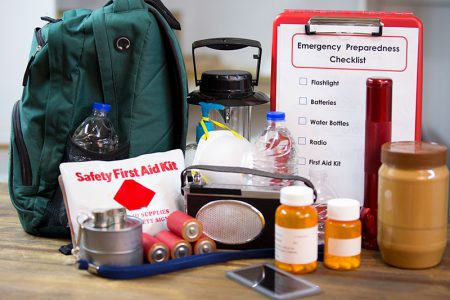Emergency Preparedness
Posted on by
September is National Preparedness Month. Each year, natural disasters are becoming more frequent and intense because of climate change, urbanization, and other factors. Emergencies can happen any place, at any time. It is important to be prepared to keep yourself and your loved ones safe. When disaster strikes, you may not have help right away due to the size of the affected area, loss of communication, and impassible roads. As a result, it is important to have the supplies and information you need to stay safe on hand.
Having emergency supplies and making emergency plans are key when preparing for a disaster. However, results from a fall 2020 survey analyzed by CDC show that many people in the United States may not have these important items to make them ready for a disaster.
Survey results found that 52% of adults in the United States have no emergency preparedness plans and about 64% do not have an emergency supply kit. Age, gender, education level, and region were all found to play an important role in preparedness and emergency supply kit ownership.
Another finding of the survey had to do with confidence: 43% of respondents did not feel confident in their knowledge of how to prepare for an emergency. CDC’s guidance can help you feel better prepared and confident when facing an emergency.
Planning is crucial. Make sure your emergency action plan has all the key information you will need to keep yourself and your loved ones safe in a disaster. As part of your plan, you should have
- Copies of important paperwork
- Designated meeting places outside of the home
- Multiple evacuation routes away from home
- A safe place to shelter
- Emergency communications plan
- Emergency phone numbers (e.g., physician, pediatrician, pharmacist, veterinarian, poison control center, animal poison control helpline, disaster distress helpline)
- List of pet friendly shelters, hotels, or out of town family or friends
Gather personal need items for you and your loved ones, including your pets. Depending on the emergency, local officials may advise people to evacuate. Prepare an emergency supply kit to ensure you are ready if disaster strikes.
If possible, include items to protect your health and others such as
- Hand sanitizer with at least 60% alcohol,
- Bar or liquid soap, disinfectant wipes, and
- Multiple clean well-fitting masks for everyone age 2 or older.
Other examples of what an emergency supply kit should contain include
- 3-day supply of food and water for each person and pet
- Prescription medicines
- Flashlights and extra batteries
- Radio (hand-crank or battery-powered with extra batteries)
- First-aid supplies
Preparing for an emergency is the most important and effective way to ensure that you and your loved ones stay safe and healthy when disaster strikes. However, differences in income and access to supplies impact the ability to prepare for many Americans.
Survey results found that people were more likely to have an emergency supply kit if they owned their home, lived in a single-family detached home, had some college education, or had an annual income of $125,000 or more. Those who are less likely to be prepared are more likely to be impacted by disaster, exacerbating existing gaps in health equity among disproportionately affected groups.
Other populations who may be more impacted by a disaster include people with disabilities or special healthcare needs. Planning, preparing supplies, and staying informed can help ensure that you or your loved ones are as comfortable as possible, and all needs are met.
Visit the following websites for more information on preparing for emergencies.
- Emergency preparedness infographic
- Natural disasters and severe weather information
- Keeping children with disabilities safe in emergencies
- Preparing children with healthcare needs for an emergency
- Household Preparedness Fall 2020 Factsheet
- Household Preparedness Spring 2021 Factsheet
Tweet this: “Be prepared for severe weather or natural disaster. Include hand sanitizer, masks, and prescription medicines in your emergency kit in case you need to evacuate. #PrepYourHealth. Learn more at https://bit.ly/3ABMNDQ #CDCEHblog via @CDCEnvironment”


Post a Comment